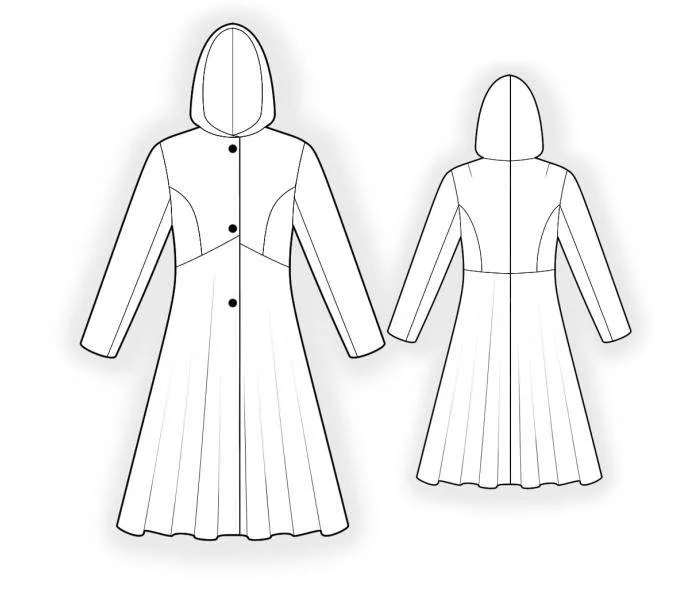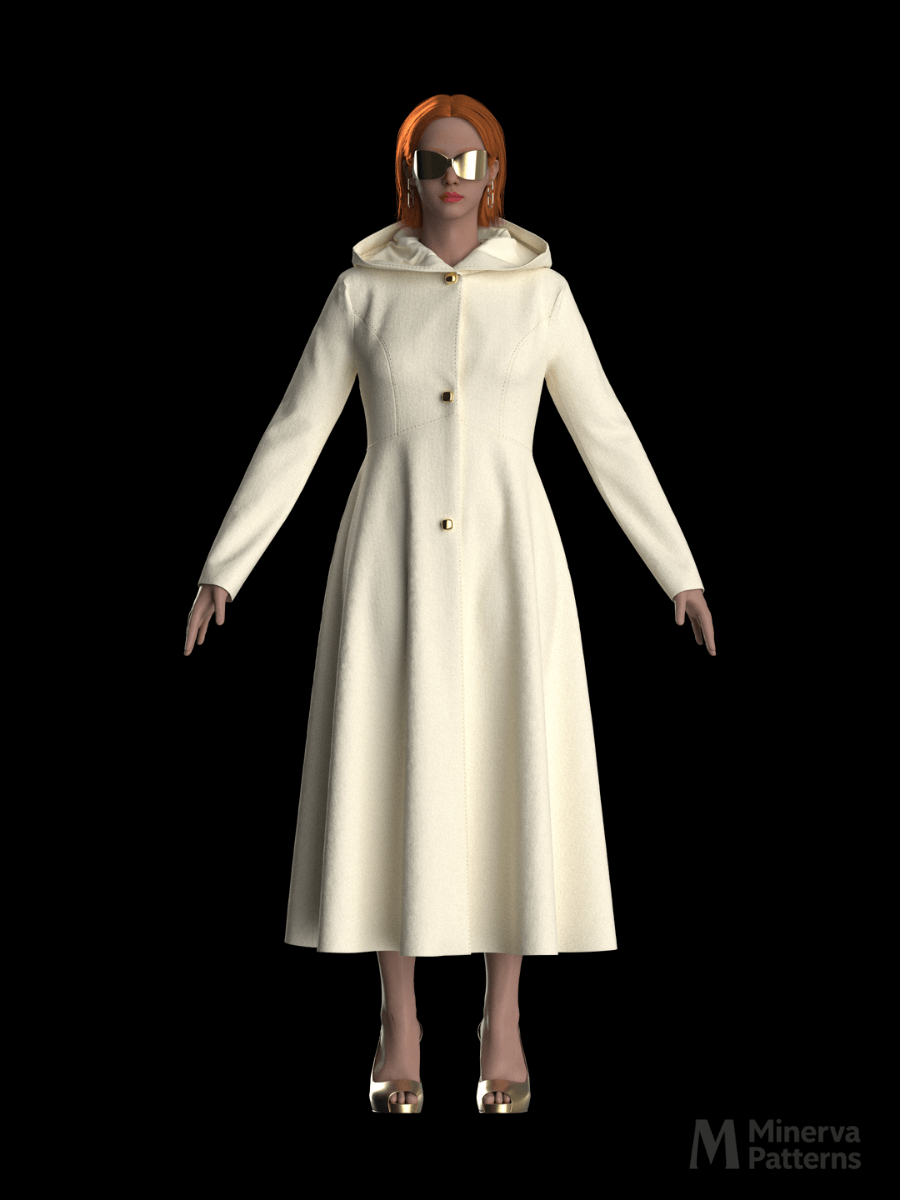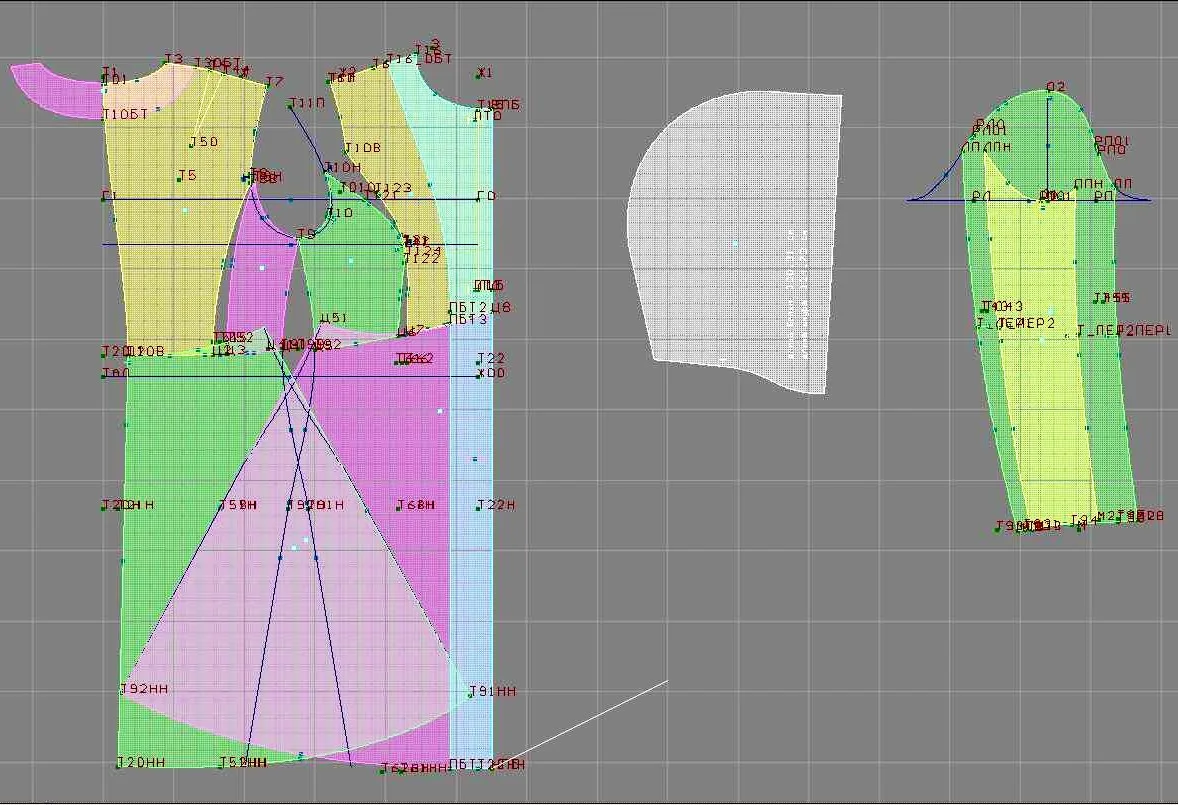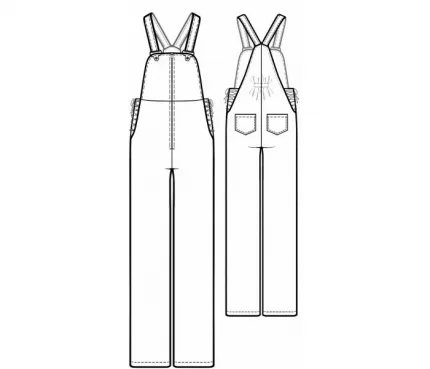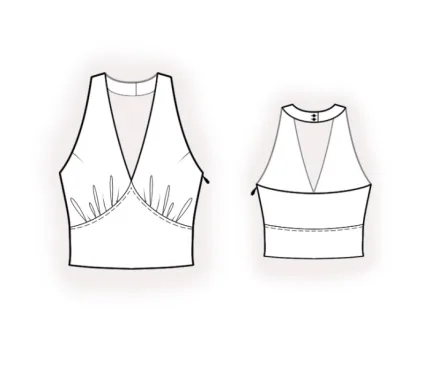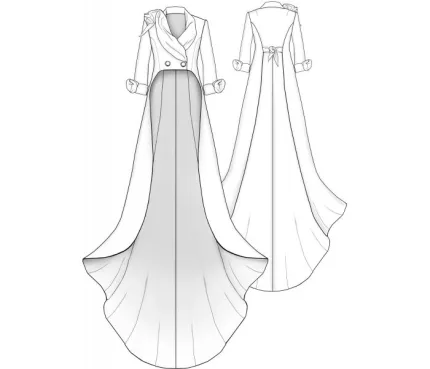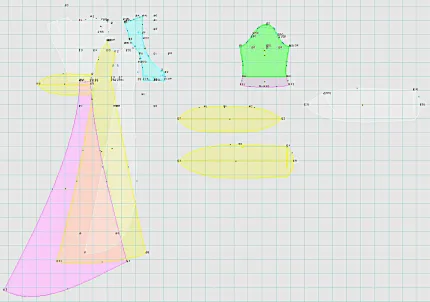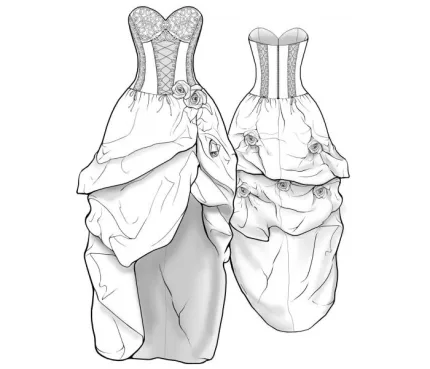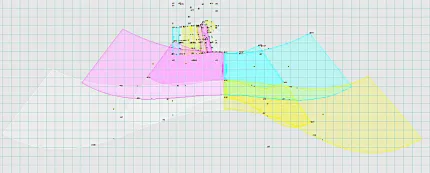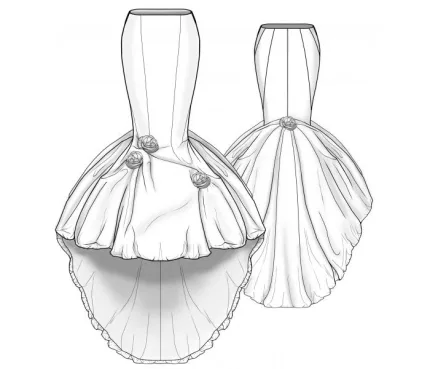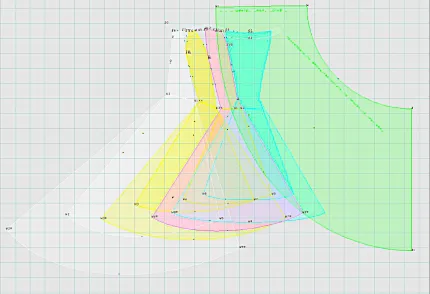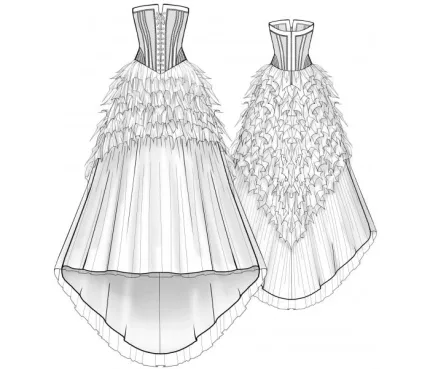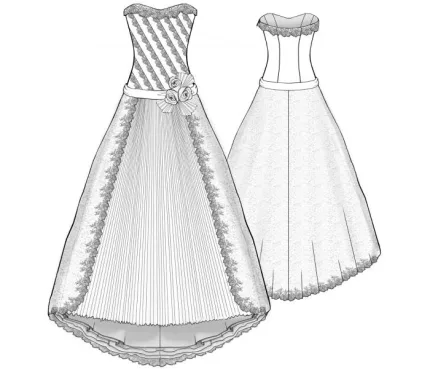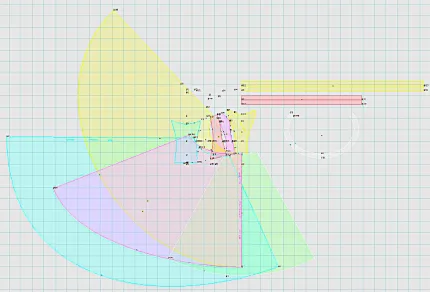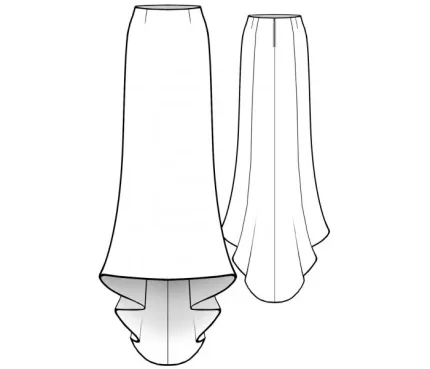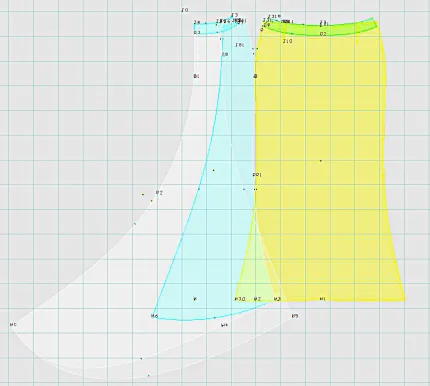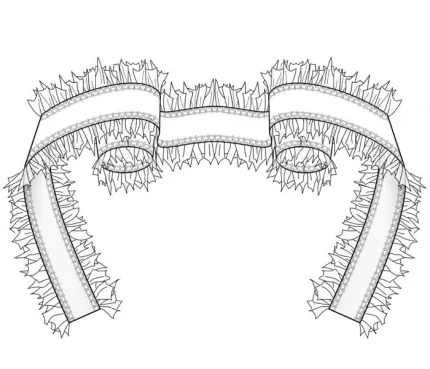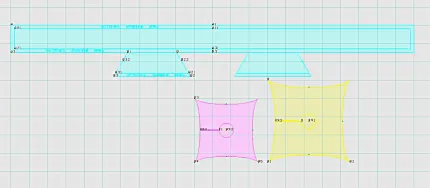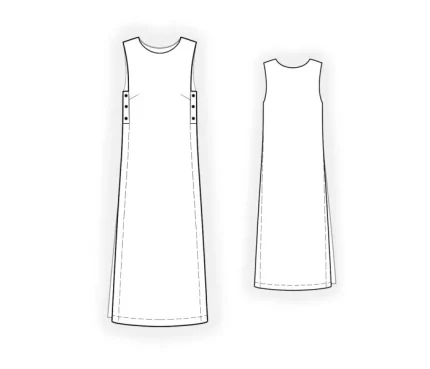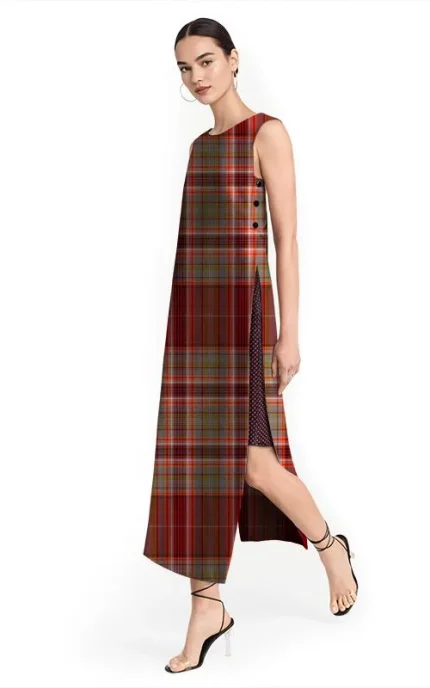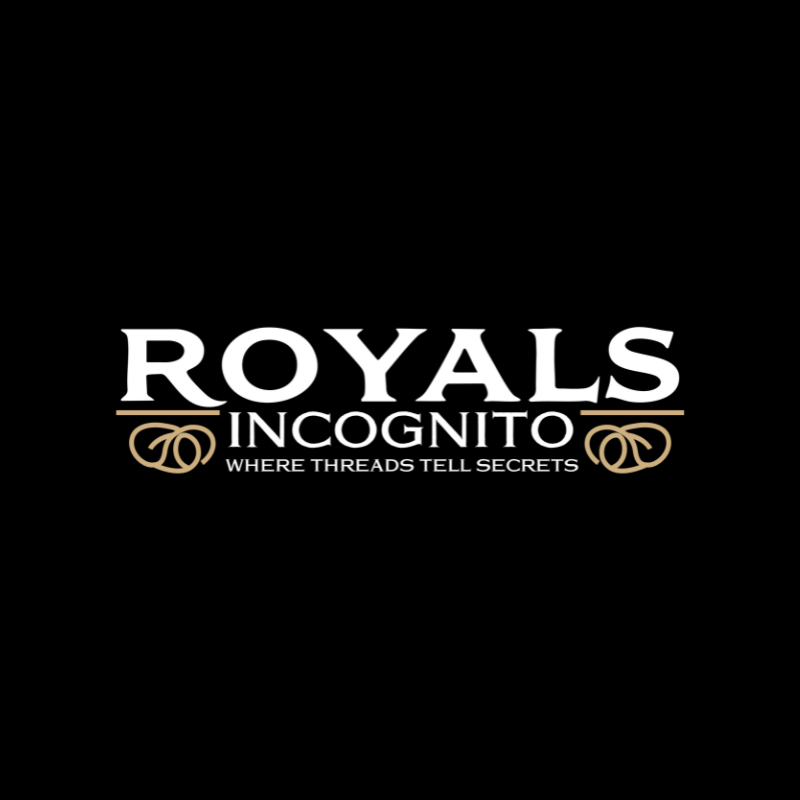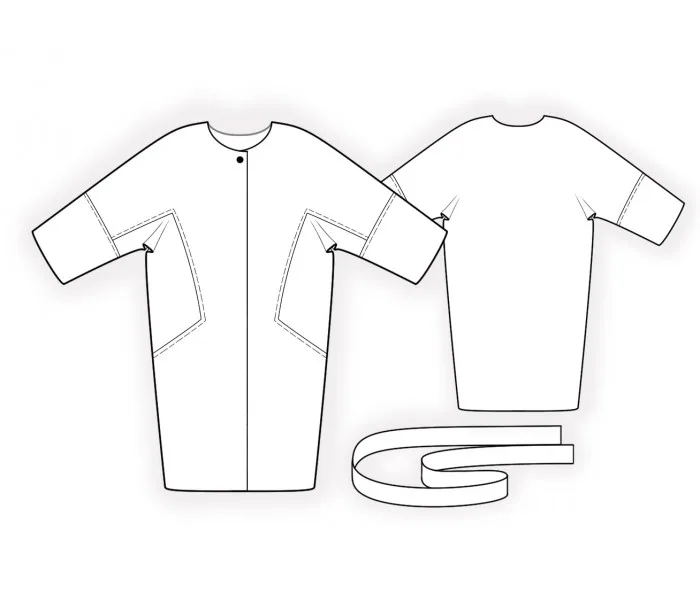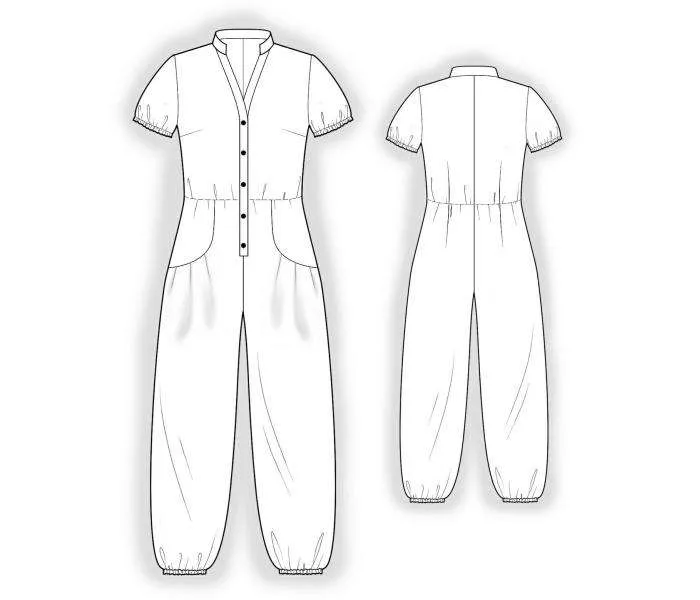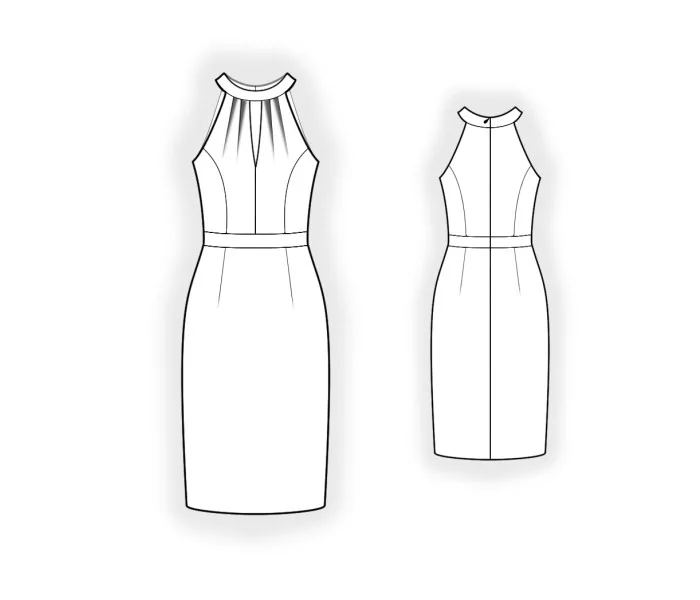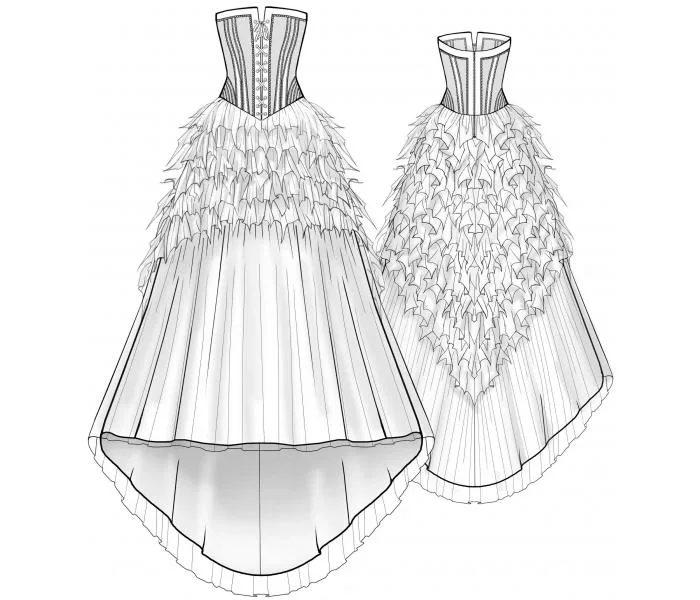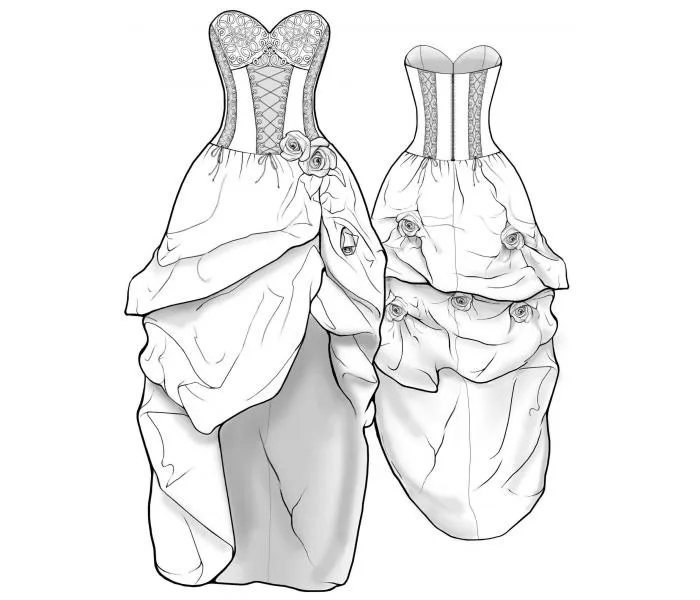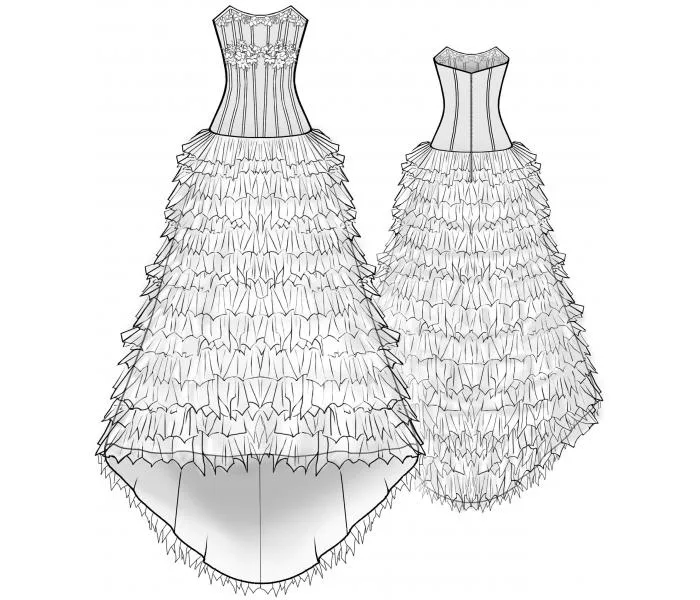DXF AAMA pattern 4497 introduces a chic and practical fully lined hooded coat pattern/fur coat pattern. It is designed with an empire waistline that flatters the figure while combining elegance and functionality. Its thoughtful details and clean lines make it a versatile addition to any wardrobe.
The bodice features a high, empire waistline with princess seams that shape the upper body for a tailored and refined look. The design transitions seamlessly into a flared skirt, created through a single front and single back panel, designed to flare gently from the empire waistline. This construction ensures a smooth, uninterrupted silhouette, emphasizing the elegant and flowing nature of the coat.
The front closure consists of three buttons, positioned to enhance the coat’s structured yet minimalistic aesthetic. The coat’s integrated hood offers added practicality, perfect for braving cooler weather in style.
The set-in sleeves are constructed with two seams, providing a sleek, tailored fit while allowing for ease of movement.
The empire waistline adds a feminine touch, while the hood and flared skirt ensure practicality and style in equal measure.
Perfect for layering over casual or formal outfits, this coat is a timeless and versatile design, balancing sophistication and functionality for any occasion.
FABRIC RECOMMENDATIONS FOR DXF AAMA PATTERN 4497
This hooded coat pattern is best suited for medium to heavyweight fabrics like wool, cashmere blends, or structured suiting fabrics to achieve the ideal shape and warmth. Also, use artificial mink fur.
Main Fabric Recommendations
To achieve the coat’s structured silhouette, warmth, and durability, the following fabrics are ideal:
- Wool:
- Medium to heavyweight wool (e.g., melton, boiled wool, or tweed) is perfect for its natural warmth, breathability, and ability to hold the flare and shape of the skirt.
- Wool blends with polyester or cashmere add softness and durability while maintaining structure.
- Cashmere Blends:
- Cashmere wool blends are luxurious, soft, and warm, ideal for a polished and sophisticated look.
- These fabrics drape beautifully and elevate the overall aesthetic of the coat.
- Thick Suiting Fabrics:
- Fabrics such as gabardine or heavy twill offer a smooth, tailored finish.
- They are great for achieving crisp seams and clean lines, especially around the empire waist and princess seams.
- Velvet or Corduroy (Optional for Special Occasions):
- Adds texture and depth, creating a unique, statement-making coat while still being warm.
5. Artificial mink fur.
Lining Recommendations
The lining not only adds comfort and ease of wear but also enhances the coat’s durability and professionalism. Consider the following options:
- Silk Satin or Polyester Satin:
- Smooth and lightweight, satin linings help the coat glide over other clothing. They’re ideal for a luxurious finish.
- Bemberg Rayon or Cupro:
- High-quality and breathable, these linings are perfect for creating a high-end look while ensuring comfort during extended wear.
- Quilted or Thinsulate Linings (For Winter Coats):
- These provide added insulation for colder climates without compromising on the coat’s fit and silhouette.
- Printed Lining Fabrics (Optional):
- Using a patterned or contrasting color lining can add a pop of personality to the interior.
By carefully choosing the main fabric, lining, and fusing materials, you can ensure the coat achieves the perfect balance of elegance, structure, and comfort while being suitable for a variety of occasions and seasons.
CUTTER’S MUST FOR DXF AAMA SEWING PATTERN 4497
NOTE: If you want the same length of this coat as on the image, extend its length by 30 cm.
From the main fabric cut the following pattern pieces:
Center back – 2 pieces
Side back – 2 pieces
Side front – 2 pieces
Center front – 2 pieces
Lower back – 2 pieces
Lower front – 2 pieces
Front facing – 2 pieces
Back neck facing – 1 piece
Upper sleeve – 2 pieces
Lower sleeve – 2 pieces
Hood – 2 pieces
From the lining, cut the below pieces using the main patterns. But make sure to cut the front, back and hood lining pieces excluding the width of front facings, back neck facing.
Center back – 2 pieces
Side back – 2 pieces
Side front – 2 pieces
Center front – 2 pieces
Lower back – 2 pieces
Lower front – 2 pieces
Upper sleeve – 2 pieces
Lower sleeve – 2 pieces
Hood – 2 pieces
From fusible interfacing cut center front, front facing, back neck facing, hem of sleeve.
IMPORTANT INFORMATION
First, print out the paper patterns and lay them out according to the fabric width (the fabric width can range from 90 cm to 150 cm) to determine how much fabric you will need (don’t forget to account for paired and symmetrical pieces).
When joining the pieces, pay attention to the notches — they must align!
SEAM ALLOWANCES
No seam allowances are included in this fur coat pattern by default. If the $1 option to add them is selected, all seam allowances will be 1 cm, except for the hem of the coat (3 cm) and hem of the sleeve (3 cm).
Please note that if the pattern pieces that you receive have a single contour, this means they have no seam allowances. However, if you see a double contour, this means the seam allowances are included.
ADDITIONAL SUPPLIES
Lining: see above recommendations for type of lining.
Fusible Interfacing:
Fusible interfacing is crucial for reinforcing key areas of the coat, such as center front, front facing, back neck facing, hem of sleeve. Choose the right type according to the chosen main fabric and desired shape, for example:
- Medium-weight fusible interfacing is recommended if you wish for structure and support.
- Heavyweight fusible interfacing is for sharp, tailored appearance.
- Knitted or stretch fusible interfacing is used for fabrics with some stretch to maintain flexibility without stiffness.
- Sew-In interfacing is used for delicate or luxury fabrics like cashmere to avoid bubbling or distortion caused by fusible types.
Closure: 3 buttons
Notions: shoulder pads and sleeve heads.
DXF AAMA PATTERN 4497 FOR 3D DESIGNERS, CONTRACTORS, AND ADVANCED SEWISTS
- DXF AAMA for 3D Designers: The DXF AAMA format ensures compatibility with most 3D fashion design software, enabling easy previews of how the dress will look and move on a digital mannequin. Designers can make adjustments quickly and accurately.
- PLT Format for Contractors: Plotter-ready PLT format allows sewing contractors to create efficient layouts for accurate cutting and optimal material use, ideal for bulk production or custom orders.
- PDF Format for Advanced Sewists: The user-friendly PDF format allows advanced sewing enthusiasts to print and assemble pattern pieces at home.
CHECKOUT ANOTHER DIGITAL PATTERN FOR A COAT

